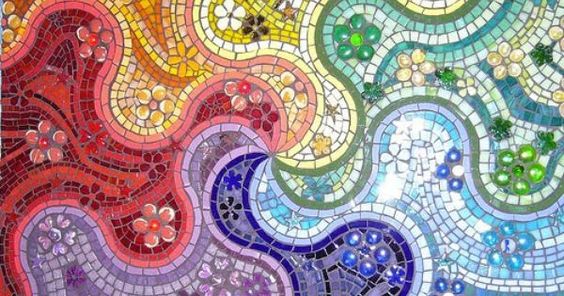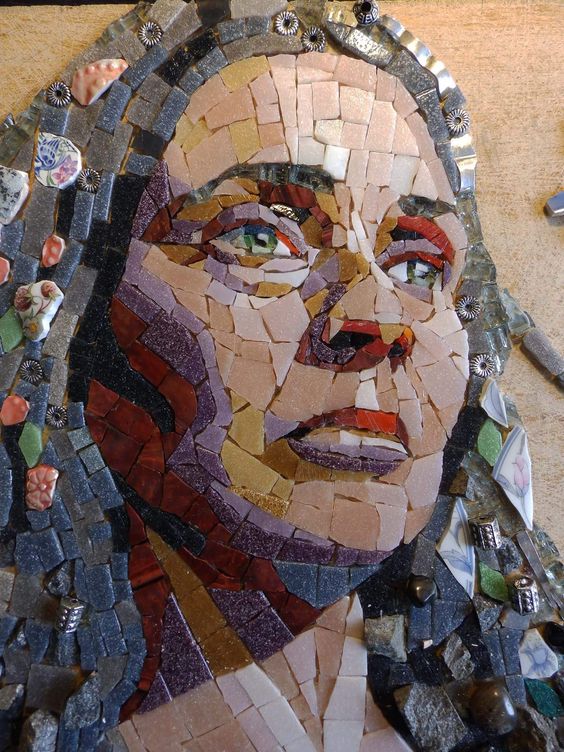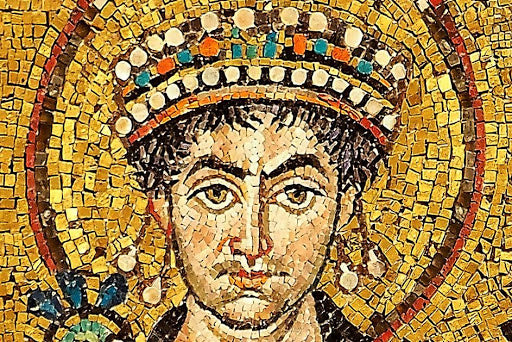If you’re looking for a new piece of mosaic art and you want something that is equal parts eye-catching and awe-inspiring, then you definitely want to look into getting Byzantine-inspired mosaic art.
The wondrous thing about mosaic artwork is the lack of limitations for displaying your art. You can install Byzantine mosaic art into your backyard pool, your existing backsplash in the kitchen or even within the tiles of your flooring.
Byzantine mosaic art uses contrasting colors, textures and miniature images found within the overall image to create pieces of art that inspire conversation and appreciation. Other forms of mosaic designs use similar themes as well but there is something about the Byzantine mosaic art that makes people take a second glance.
Is it the images depicted? Is it the way that the colors suit but contrast against each other? Is it the fact that this type of artwork was once considered taboo and banned (more on that below)? The answer is yours to decide and define but the one thing that people can agree on is that Byzantine Mosaics are rare and recognizable from the first glance.
Before committing to Byzantine Mosaic artwork, it should be understood just what mosaic pieces are, where did the Byzantine Mosaic period originate and the type of pieces that can be found and also, where you can display such pieces in subtle or eye-catching ways. If you are not sure if you want to use Byzantine mosaic designs in your home, then there are other types that can be used in the same way to inspire and showcase part of your personality.
What is Mosaic Art?

Image from Wikipedia
What exactly constitutes mosaic art? Does it refer to the images presented or the colors used? Actually, mosaic art is an artwork that has been created using tessera joined together to display a pattern, image or portrait. Tessera could come from pebbles or stones, concrete, glass or a combination of all of them to create works of art.
Want to see an example of a pattern created using mosaic art? Check out how images are transformed using small hard materials:

Image from Pinterest

Image from Pinterest
Mosaic art is subjective and can be used to transform an ordinary image into something magical. Accomplished mosaic artists can also use pictures from a gathering to create mosaic portraits of loved ones such as the following examples:
What is Byzantine Mosaic Art?

Image from Wikipedia
To truly appreciate Byzantine mosaic art, a bit of background on what it truly stands for is important. During the Byzantine Empire (which existed in Eastern Roman) in medieval times, from the 6th to the 15th century, mosaics were one of the most popular forms of artwork to be displayed in the or in places of religious worship. The ruler of the Byzantine Empire, Justinian along with his wife, commissioned many pieces. These artworks were used as religious decorations that immortalized stories.

Image from Wikipedia
Artists from all over Europe came to East Roman to study, learn and grow under the watchful eye of established mosaic artists.
Religious mosaic art was used to depict images of religious figures & stories usually displayed out in the open in worship places. It is believed that mosaic wall art were used as the primary source of artwork because it could be installed directly into the floor, walls or windows of the church. It didn’t have to be hung on a wall, it could be part of a wall.

Image from WilderUtopia
Byzantine Religious Mosaics
Towards the end of the 8th century, any religious images were considered heretic, which lead way to the destruction of many mosaic wall art. Luckily, some were preserved to be admired by people of all religious fractions today.
After a while, the ban was lifted. This meant that mosaic designs were on the rise again in popularity. Local and international artists began to move beyond religious imagery and further expand their creative processes. This practice for using small hard materials as the basis of the image continued until the fall of the Byzantine Empire in 1453.

Image from Mozaico Blog
Mosaic art that was influenced by the Byzantine Empire had such an influence that its textures, tone, and color is still maintained by artists globally. From Greece to Serbia to Russia and other Eastern Orthodox countries in modern times, mosaic art was affected by the Byzantine mosaics.
Why Byzantine Mosaic Art?

Image from Wikipedia
Some people may be wondering why Byzantine Mosaic art? It might not be the images you are looking for from that period but the textures and the detailing which were achieved using contrasting colors. It could be the way that Byzantine mosaics are both simplistic and complex simultaneously that intrigues you. Or, the way that a simple mosaic contains numerous miniature mosaics to create a bigger artwork.

Image from Pinterest
If you are a religious person, then you might enjoy having your faith and beliefs displayed through an artwork that you walk by every single day. It could be an image of your place of worship or an inspiring religious figure.
Ways to Display your Byzantine Mosaic Art

Image from Pinterest
Whether you commissioned a piece of mosaic art in the same style as the pieces that came out of the Byzantine period or you have purchased a replica piece of art; you now need to know how to display it in your home. Here are some ways religious mosaics can be displayed to inspire you:
- Mosaic wall art to be hanged anywhere you’d like just like paintings.
- Entrust the services of a professional and get your mosaic image installed directly into the walls of your interiors
All in all, artwork is subjective and you should only pick the ones that express you the best. You should choose pieces that you feel a personal connection with.

Image from Pinterest
Personalized artwork or pieces that have been picked out over much debate should be an extension of your personality. You want pieces surrounding you that inspire emotion, whether those emotions are positive, negative, thought-provoking or therapeutic.
Let us know in the comments below what’s your favorite element about Byzantine mosaic art!
For any inquiries, we are always available on sales@mozaico.com.




